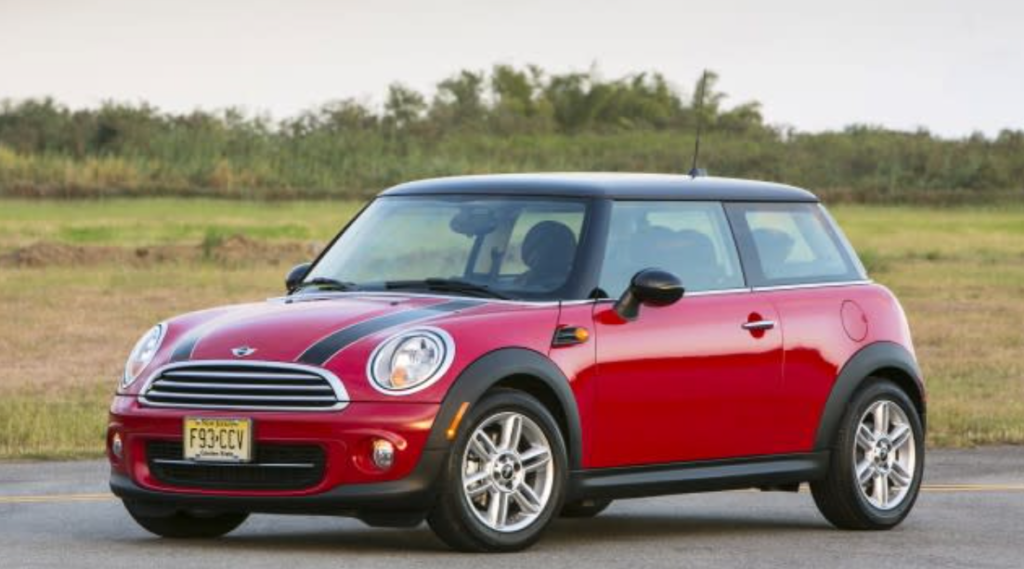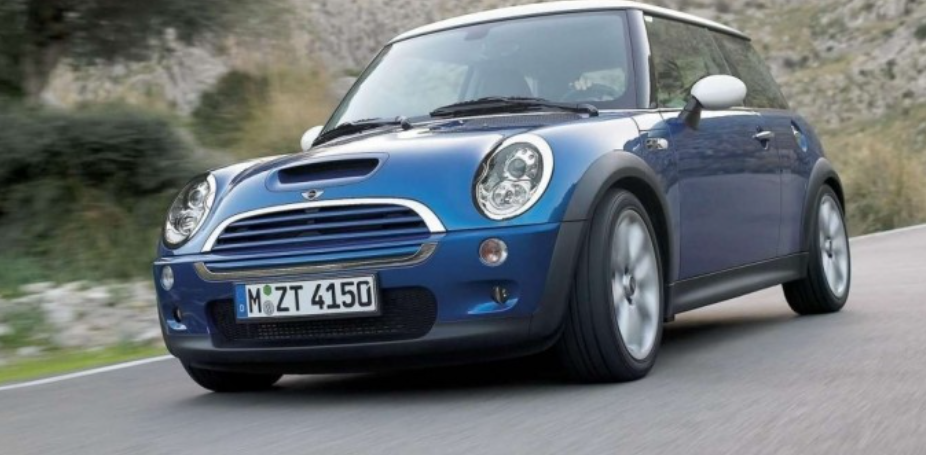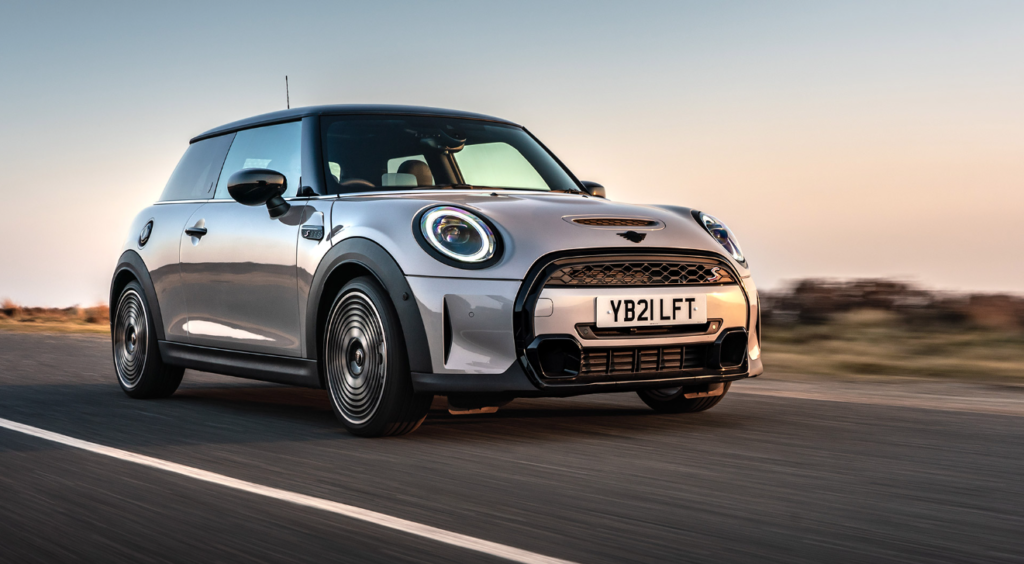The Mini Cooper, a hallmark of British automotive design, has seen multiple iterations since its debut in the 1960s. Originally conceived as an answer to the Suez crisis and the subsequent need for fuel-efficient vehicles, it quickly rose to prominence, not just for its efficient design but also for its iconic appearance and racing heritage. Over time, the Mini Cooper has become a global sensation, loved by many for its compact design and sprightly performance.

The Importance of Vehicle Weight
When assessing a car’s performance, fuel efficiency, or safety, one of the key factors that often get overlooked is its weight. How much does a Mini Cooper weight? It’s a question that aficionados and prospective buyers alike might ask. Vehicle weight plays a significant role in acceleration, braking, fuel consumption, and even the overall feel of the car on the road.
The Basics of Car Weight
What Constitutes Car Weight?
The weight of a car is not just about its metal chassis or its engine. Several components contribute to a vehicle’s overall weight:
- Chassis and Body: This includes the metal frame, doors, windows, and body panels.
- Engine and Transmission: The heart and soul of the vehicle. A heavier engine might provide more power, but it can also affect performance and fuel efficiency.
- Interior and Features: As cars become more luxurious, features like leather seats, advanced infotainment systems, and other amenities add to the weight.
- Fluids: This includes gasoline in the tank, engine oil, coolant, brake fluid, and other essential liquids.
Curb Weight vs Gross Vehicle Weight
When discussing how much does a Mini Cooper weight, it’s crucial to distinguish between curb weight and gross vehicle weight:
- Curb Weight: This is the weight of the Mini Cooper when it’s parked at the curb, without passengers or cargo, but with all the necessary fluids. Essentially, it’s the weight of the car as you’d buy it from a dealership.
- Gross Vehicle Weight (GVW): This is the total weight of the Mini Cooper when fully loaded with passengers, cargo, and all necessary fluids. GVW will always be higher than the curb weight and provides a limit that drivers shouldn’t exceed for safety reasons.
Historical Perspective
Weight Evolution: Classic Mini vs Modern Mini
The classic Mini Cooper, when it was first introduced, was designed to be a lightweight, fuel-efficient vehicle. The original 1959 Mini weighed in at a mere 617 kg (1,360 lbs). Over the decades, as the Mini Cooper has evolved and transformed under various ownership and designs, its weight has understandably increased. Modern iterations, equipped with more features and safety equipment, tend to weigh more. For instance, a 2020 Mini Cooper might weigh anywhere from 1,200 kg to 1,400 kg (2,645 lbs to 3,086 lbs), depending on the model and its features.
Factors Influencing Weight Changes Over Time
The difference in weight between the classic Mini and the modern Mini Cooper is not merely a product of whimsical design choices. Several factors have influenced these changes over the years, with a focus on safety, technology, consumer demands, and regulations. Let’s delve into some of the key reasons behind the weight evolution.
- Safety Improvements: Modern vehicles, including the Mini Cooper, are equipped with a variety of safety features that weren’t present or were rudimentary in earlier models. Features like multiple airbags, advanced crumple zones, side impact bars, and stability control systems have undoubtedly added to the weight. Regulations often mandate these safety features, ensuring vehicles provide the best possible protection in the event of a collision.
- Technological Advancements: With the integration of modern technology, cars have become more sophisticated. Infotainment systems, advanced HVAC systems, power seats, and various sensors and electronic modules contribute significantly to the overall weight.
- Material Choices: While advances in materials science have provided us with stronger yet lightweight materials, they sometimes can be heavier than the materials used in vintage cars. For instance, the use of high-strength steel in critical areas for added rigidity and safety can add weight. However, manufacturers also use materials like aluminum and carbon fiber to counterbalance and reduce weight elsewhere.
- Consumer Expectations: Modern consumers expect a certain level of comfort, luxury, and convenience in their vehicles. This means adding sound-deadening materials, plush seating, panoramic sunroofs, and other amenities – all of which can add weight to the vehicle.
- Stringent Emissions and Efficiency Standards: Ironically, the push for more fuel-efficient vehicles has sometimes resulted in added weight. Technologies like hybrid systems, which include batteries and electric motors, or exhaust after-treatment systems in diesel vehicles, can increase the vehicle’s weight.
- Design and Aesthetics: The design philosophy has shifted over the decades. Cars today, including the Mini Cooper, have a more aggressive stance, larger wheels, and broader bodies, all contributing to increased weight.
While the classic charm of the older Mini is undeniable, the modern Mini Cooper is a testament to advancements in automotive design and engineering. The weight increase is a by-product of the times, reflecting the evolution of consumer demands, safety standards, technological integration, and design aesthetics.

Mini Cooper: By the Models
The Mini Cooper comes in various models, each with its unique characteristics and weight.
Mini Cooper 3-door Hatchback The 3-door hatchback is the classic Mini design. It’s the most compact model, and the lightest in the range, weighing in at approximately 1,150 kg.
Mini Cooper 5-door Hatchback The 5-door variant is similar to the 3-door hatchback but offers two additional doors for easier access to the rear seats. This model is slightly heavier, with a weight of around 1,200 kg.
Mini Cooper Convertible The convertible adds some extra weight due to the mechanisms needed for the folding roof. It weighs around 1,275 kg.
Mini Cooper Clubman The Clubman is a longer, more spacious variant of the Mini Cooper, with a unique split-door at the back. It’s heavier than the hatchback models, weighing approximately 1,375 kg.
Mini Cooper Countryman The Countryman is a compact SUV with more space and a higher ride height. It’s the heaviest Mini model, with a weight of around 1,450 kg.
The Influence of Engine Types
The Mini Cooper’s weight is also influenced by the type of engine installed.
Gasoline Engine Models Gasoline engines are the most common in the Mini Cooper. They generally weigh less than diesel engines due to their simpler design and lighter components.
Diesel Engine Models Diesel engines, with their robust construction and additional components like turbochargers, weigh more than gasoline engines. However, they’re known for better fuel efficiency and torque.
Electric and Hybrid Variants Electric and hybrid models tend to be heavier due to the weight of the batteries. The Mini Cooper SE, an all-electric model, weighs around 1,365 kg.
Impact of Optional Features on Weight
Various optional features and packages can also affect the Mini Cooper’s weight.
Interior Upgrades Upgraded seats, premium sound systems, and other interior enhancements can add to the weight.
Exterior Add-ons Features like larger wheels, sunroofs, and additional body kits can increase the Mini Cooper’s weight.
Performance Packages Performance-oriented packages may add or reduce weight, depending on the components included, such as lightweight wheels or larger brakes.
The Relationship Between Weight and Performance
The Mini Cooper’s weight directly impacts its performance.
Acceleration and Speed Lighter cars generally have better acceleration and top speed due to the engine having to move less mass.
Braking Distances Heavier cars take longer to stop as the brakes have to deal with more inertia.
Handling and Agility Lighter cars tend to be more agile and responsive in corners, which is one of the Mini Cooper’s defining characteristics.
The Mini Cooper’s weight varies significantly depending on the model, engine type, and optional features chosen. Despite the differences in weight, all Mini Cooper models are known for their nimble handling and spirited performance. Whether you’re curious about how much does a Mini Cooper weight or are considering buying one, understanding these factors will help you make a more informed decision.
Mini Cooper Weight and Fuel Efficiency
Influence on Gas Mileage
The weight of a vehicle has a direct impact on its fuel efficiency. Generally, heavier vehicles consume more fuel than lighter ones, because they require more energy to move. When it comes to the Mini Cooper, the same principle applies. The typical Mini Cooper weighs between 2,500 and 2,900 pounds. The car’s weight, along with other factors such as engine type, aerodynamics, and driving style, affects its gas mileage.
For example, the 2021 Mini Cooper 3-door Hatchback with a three-cylinder engine has an estimated fuel efficiency of around 28 miles per gallon in the city and 38 miles per gallon on the highway. However, as the vehicle adds weight due to passengers, cargo, or optional features, the fuel efficiency can decrease slightly.
Benefits of Weight Reduction
Reducing the weight of a Mini Cooper can provide several benefits, most notably improved fuel efficiency. Lighter vehicles typically have better acceleration, handling, and braking performance. In addition, a lighter Mini Cooper would exert less pressure on the tires, brakes, and suspension components, potentially extending their lifespan.
When it comes to fuel efficiency, even a modest reduction in weight can lead to noticeable savings over time. For example, reducing the vehicle’s weight by 100 pounds could potentially improve fuel efficiency by up to 2%, which translates to savings at the gas pump.

Safety Implications of the Mini Cooper’s Weight
Crash Test Performances
The weight of a vehicle plays a crucial role in crash test performance. Heavier vehicles tend to have more inertia, which can lead to more severe collisions. However, the Mini Cooper is equipped with a host of safety features, including advanced airbags, antilock brakes, and stability control, which help mitigate the impact of collisions.
The Mini Cooper has received good ratings in crash tests conducted by organizations such as the Insurance Institute for Highway Safety (IIHS) and the National Highway Traffic Safety Administration (NHTSA). These tests take into account factors such as the car’s weight, structural integrity, and safety features.
Stability in Adverse Conditions
While a heavier vehicle can offer more stability in adverse driving conditions like strong winds or slippery roads, it’s essential to note that the Mini Cooper’s compact size and low center of gravity also contribute to its stability. The Mini Cooper’s weight distribution and suspension design help it maintain control even in challenging conditions.
Weight Management Tips for Mini Cooper Owners
Reducing Unnecessary Load
Keeping unnecessary items out of your Mini Cooper is a simple and effective way to manage its weight. This includes removing items from the trunk or back seat that are not needed for your journey. Even small weight reductions can lead to improved fuel efficiency and handling.
Benefits of Lightweight Components
Opting for lightweight components can further reduce the weight of your Mini Cooper. For example, choosing lighter wheels, such as those made of alloy instead of steel, can significantly decrease the vehicle’s weight. Additionally, some aftermarket modifications like carbon fiber hoods or lightweight exhaust systems can contribute to weight reduction while potentially enhancing the car’s performance and appearance.
Summary
Key Takeaways about Mini Cooper Weight
Understanding how much does a Mini Cooper weight and how weight impacts its performance, fuel efficiency, and safety is crucial for potential buyers and current owners. While the typical Mini Cooper weighs between 2,500 and 2,900 pounds, several factors can influence this weight, including optional features, cargo, and passengers.
The Balance Between Weight, Performance, and Safety
The Mini Cooper strikes a balance between weight, performance, and safety. Its compact size and weight contribute to agile handling and impressive fuel efficiency. At the same time, its safety features and structural design ensure that it performs well in crash tests, providing peace of mind for drivers and passengers.
Frequently Asked Questions (FAQs)
How much does a Mini Cooper weight compare to competitors?
The Mini Cooper’s weight is in line with many of its competitors in the subcompact car category. However, it’s essential to compare specific models and trims, as weight can vary significantly based on features and options.
Has the Mini Cooper gotten heavier over the years?
Like many vehicles, the Mini Cooper has gained weight over the years due to factors such as added safety features, larger engines, and increased comfort and convenience options.
How does weight influence the Mini Cooper’s fuel consumption?
Weight plays a significant role in a vehicle’s fuel consumption. Generally, heavier vehicles require more energy to move, leading to higher fuel consumption. The Mini Cooper’s relatively low weight contributes to its impressive fuel efficiency.
Are there any safety concerns related to the weight of the Mini Cooper?
While weight can impact crash test performance, the Mini Cooper’s safety features and structural design help mitigate the impact of collisions. The Mini Cooper has received good ratings in crash tests conducted by organizations like the IIHS and NHTSA.
Can aftermarket modifications significantly alter the Mini Cooper’s weight?
Yes, aftermarket modifications such as lightweight wheels, carbon fiber components, and lightweight exhaust systems can reduce the Mini Cooper’s weight, potentially leading to improved performance and fuel efficiency. However, it’s essential to consider the potential impact on the vehicle’s warranty, safety, and overall performance before making any modifications.